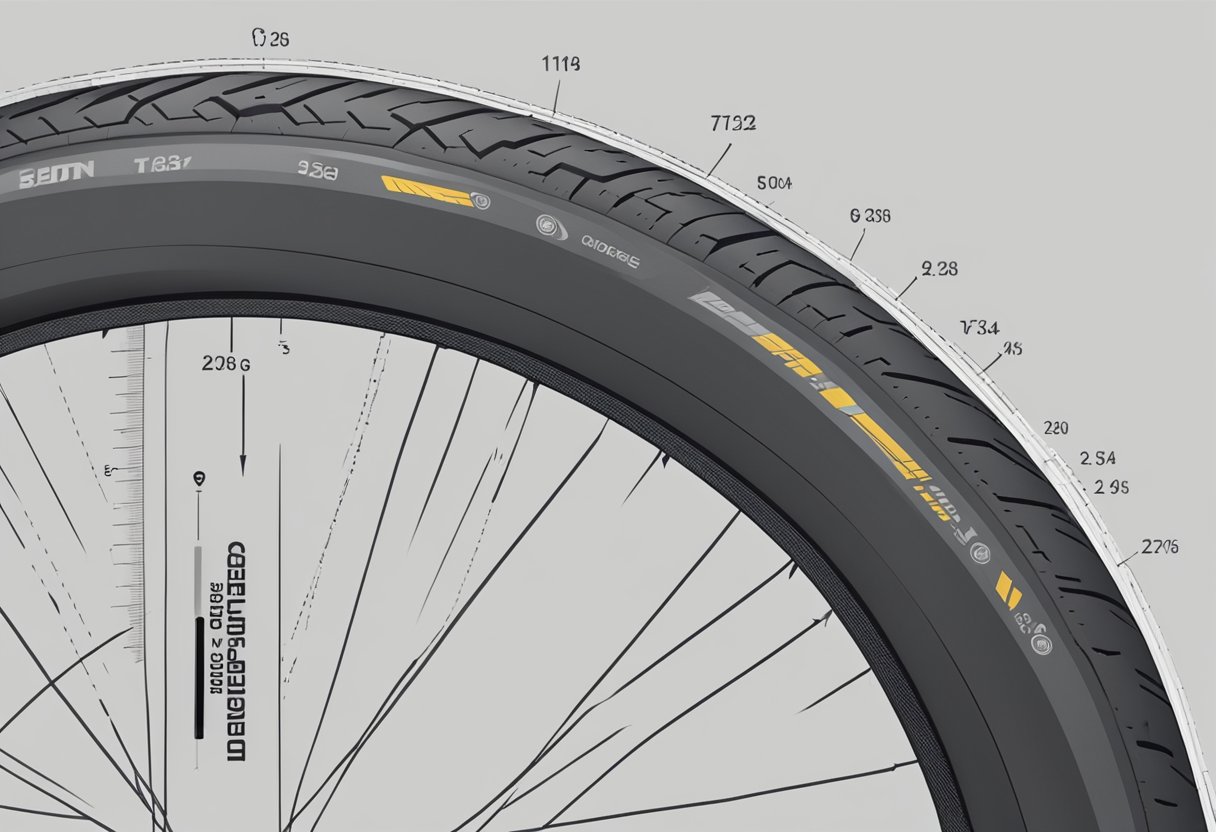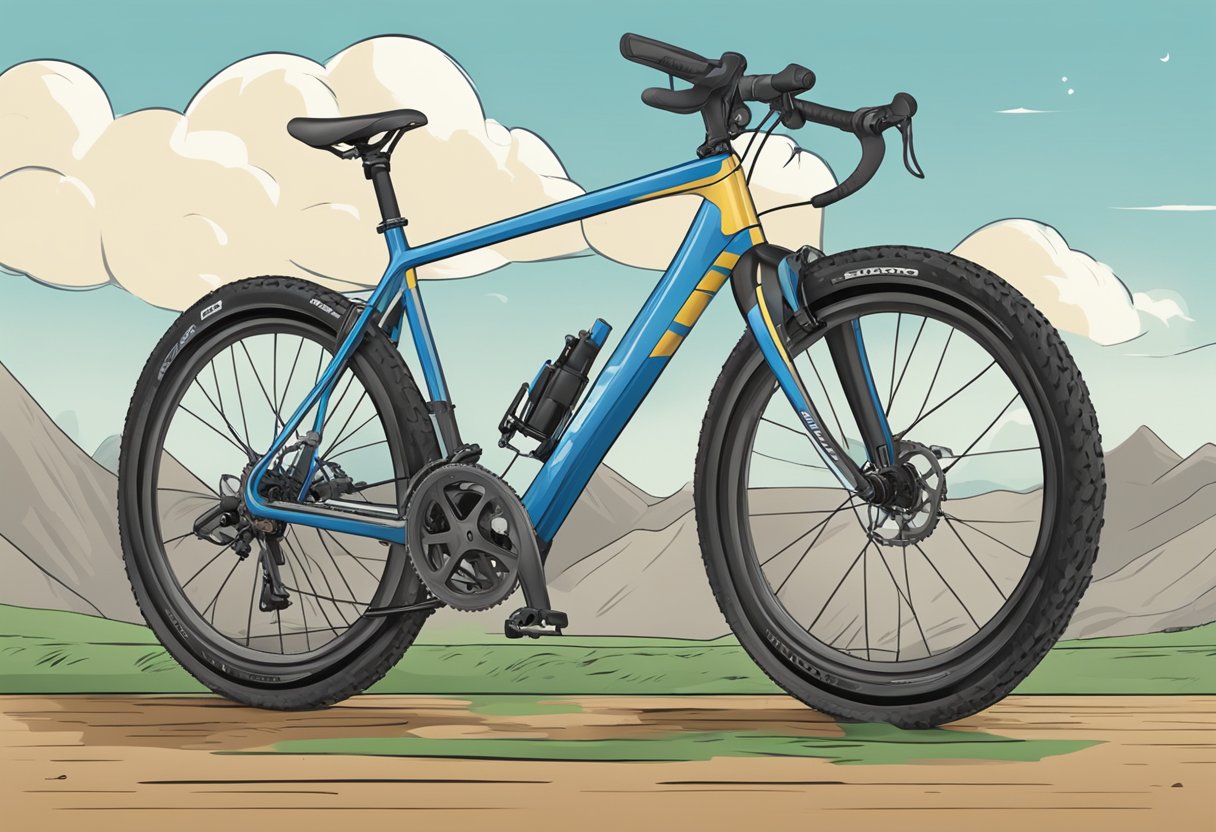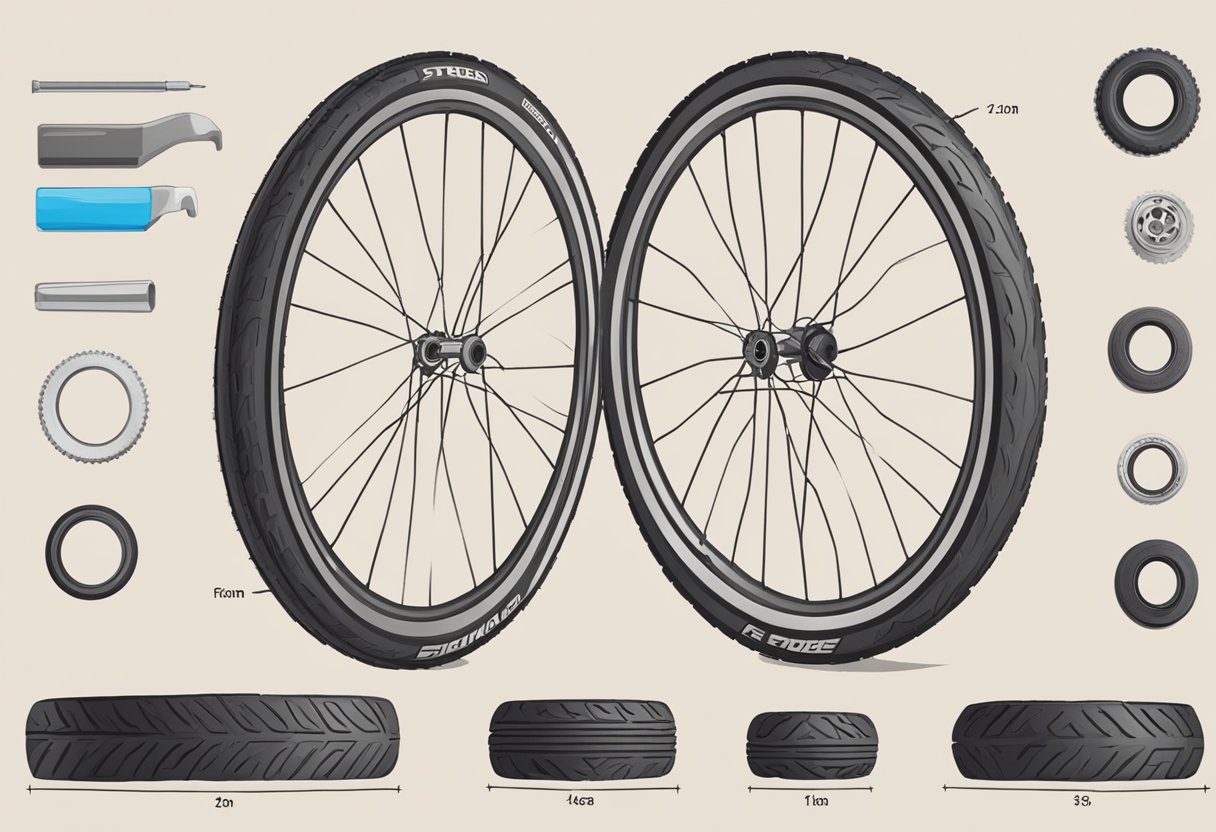The lifespan of road bike tires is influenced by a variety of factors including riding habits, tire pressure, road conditions, and the quality of the tire itself. On average, road bike tires may last between 1,000 to 3,000 miles. Regular cyclists will often recognize the signs of tire wear, such as frequent flats, visible tread wear, or the sensation of decreased grip during rides.
To maximize tire longevity, manufacturers recommend adhering to the specified tire pressure and routinely inspecting the tires for damage or wear. Factors such as the rider’s weight, frequency of rides, and environmental elements – like exposure to UV light, heat, and debris – can also affect how long the tires maintain optimal performance.
Maintenance practices play a crucial role in extending the lifespan of road bike tires. Riders can take proactive steps to care for their tires by cleaning them regularly, checking for and removing debris, and storing the bike properly when not in use. By understanding the variables that impact tire durability, cyclists can make informed decisions to safeguard their investment and ensure a safe riding experience.
Defining Road Bike Tire Longevity
Road bike tire longevity refers to the duration of time that tires remain functional and safe for cycling. It’s measured by the distance cycled, typically in miles or kilometers, and the timeframe before a replacement is needed.
Factors Impacting Tire Lifespan
- Material Quality: Tires made from higher-grade rubber compounds with optimized thread patterns tend to last longer due to better wear resistance.
- Tire Pressure: Consistently riding with the correct tire pressure helps ensure even wear, thus extending the tire’s lifespan.
- Riding Conditions: Frequent cycling on rough or debris-strewn roads accelerates tire wear compared to smooth asphalt.
- Rider Weight and Cargo: Extra weight from the rider or attached cargo places additional pressure on the tires, contributing to faster wear.
- Maintenance Frequency: Regular cleaning and inspection can catch issues like small cuts or embedded objects before they lead to premature tire failure.
- Cycling Style: Aggressive riding with hard braking and sharp turns wears tires out quicker than a more conservative approach.
Typical tire lifespan varies significantly based on the mentioned factors, but a road bike tire’s average lifespan under normal conditions is approximately 1,000 to 3,000 miles.
Types of Road Bike Tires
When selecting road bike tires, riders have three distinct types to consider—each with their own unique construction and performance characteristics.
Clincher Tires
Clincher tires are the most common type found on road bikes. They consist of an outer tire and an inner tube that holds the air. The tire clinches onto the wheel rim, typically with a bead made from steel or Kevlar. Maintenance is straightforward with clincher tires as they are easy to repair or replace the inner tube in the event of a puncture.
Types of Road Bike Tires
When selecting road bike tires, riders have three distinct types to consider—each with their own unique construction and performance characteristics.
https://www.youtube.com/watch?v=7YswRZP_7kw&embed=true
Clincher Tires
Clincher tires are the most common type found on road bikes. They consist of an outer tire and an inner tube that holds the air. The tire clinches onto the wheel rim, typically with a bead made from steel or Kevlar. Maintenance is straightforward with clincher tires as they are easy to repair or replace the inner tube in the event of a puncture.
Tubular Tires
Tubular tires are a single unit with the inner tube sewn into the tire, which is then glued onto a tubular-specific rim. These tires are favored by professional racers for their performance benefits, which include less rolling resistance and a smoother ride. However, they require more effort when repairing a flat, often necessitating the replacement of the entire tire.
Tubeless Tires
Tubeless tires remove the need for an inner tube, relying on an airtight seal between the tire and rim, which can be enhanced with a liquid sealant. They offer the advantage of being able to be ridden at lower pressures without risking pinch flats, and sealant can instantly repair small punctures. Installation and initial setup can be more complex than clincher tires, but they are increasingly popular for their performance and comfort gains.
Maintenance and Care for Optimized Tire Life
https://www.youtube.com/watch?v=vwwK7DGMDmA&embed=true
Maximizing the lifespan of road bike tires hinges on diligent maintenance and proper care techniques. Consistent attention to these aspects ensures peak performance and can forestall premature wear.
Regular Inspection and Maintenance
Frequency: Each ride should begin with a quick assessment of tire integrity and air pressure levels. Tires should be inspected for cuts, punctures, embedded debris, or signs of wear such as squared-off tread patterns or worn side walls.
Air Pressure: Appropriately inflated tires can decrease rolling resistance and reduce the risk of flats. Manufacturer’s specifications typically determine ideal pressure, yet adjustments might be needed based on rider weight and road conditions.
- Weekly Checks:
- Inspect tread and sidewall condition.
- Ensure correct tire pressure with a gauge.
- Rotate tires front to back to distribute wear evenly.
Check out our in-depth guide into the importance of tyre pressure here.
Proper Cleaning and Storage
Cleaning Process: A gentle wipe-down after each ride can prevent buildup of dirt and oils that may degrade rubber over time. Use mild soap and water, thoroughly rinse off any cleaning agents, and avoid harsh chemicals that could harm the tire’s composition.
This really can’t be underestimated and we go into in depth on how to clean a bike in this article on our site, just click here.
Storage Guidelines:
It is crucial to store bikes in a cool, dry environment, away from direct sunlight and ozone sources to prevent rubber degradation.
-
Hanging or storing the bike in a vertical position can relieve pressure on the tires.
-
Before Prolonged Storage:
- Clean tires thoroughly.
- Inflate tires slightly above regular riding pressure to maintain shape.
- Recheck tire pressure if not used for extended periods.
Adhering to these maintenance and care protocols will help cyclists get the most out of their road bike tires and potentially extend their usable life significantly.
Understanding Tire Wear and Damage
https://www.youtube.com/watch?v=ktVtKqZA6cg&embed=true
Proper assessment of a road bike tire’s condition can greatly affect performance and safety. It is crucial to recognize the indicators of wear and understand the implications of tire damage.
Signs of Wear and Damage
Road bike tires endure constant stress, leading to wear that manifests through various signs. Wear indicators, often visible as small holes or notches in the tire tread, become less noticeable as the tire material erodes. Cyclists should regularly inspect tires for:
- Cuts and holes: Sharp objects on the road can cause punctures, leaving visible cuts or holes in the tire.
- Tears and sidewall damage: These can occur from impacts with curbs or debris and may show as visible gashes or fabric threads on the tire’s sidewalls.
Tires might also display deformities, such as bulges or uneven wear patterns, indicating internal damage or issues with alignment and inflation.
Tire Damage and Its Effects
Tire damage not only shortens the lifespan of the tire but also poses a safety risk. Here are specific effects of tire damage:
- Punctures: These can lead to sudden or slow air loss, impacting handling and the risk of a blown tire mid-ride.
- Sidewall damage: Compromises tire structure, which may cause blowouts, especially under high pressure.
It’s evident that the impact of wear and damage extends beyond merely aesthetics or the need for frequent replacement. It directly correlates with the bike’s handling, the rider’s comfort, and overall safety during a ride.
Tire Performance Factors
https://www.youtube.com/watch?v=FnUnOYbWZ9I&embed=true
Tire longevity is significantly influenced by several performance factors that affect their grip, resistance to punctures, and overall durability.
Traction and Grip
Tire traction is the ability to maintain contact with the road surface, which is crucial for effective handling and cornering. A higher tread pattern depth typically offers better traction, but can decrease with wear, reducing grip over time. Optimal grip is also determined by the tire’s rubber compound, with softer compounds providing better adherence but wearing out faster.
Puncture Resistance
Puncture resistance is a critical factor in extending tire life. Tires with reinforced sidewalls and additional puncture protection layers are more resistant to sharp objects. Technologies, such as Kevlar lining, can significantly improve a tire’s resilience to punctures, while still affecting rolling resistance minimally.
Riding Style and Conditions
An individual’s riding style plays a vital role in tire wear. Aggressive riding that includes rapid acceleration and hard braking will wear tires quicker than a more conservative approach. The conditions under which the bike is ridden also impact tire longevity. Rough, abrasive surfaces and debris-laden paths contribute to faster tire wear, while smooth, clean asphalt preserves it.
When to Replace Road Bike Tires
https://www.youtube.com/watch?v=epzhOX8nJL0&embed=true
Ensuring timely replacement of road bike tires is crucial for maintaining safety and performance. One should be attentive to the warning signs of wear and consider the tire’s age when deciding to replace them.
Warning Signs for Tire Replacement
Visible Wear:
- Tread depth: Check if the tread is significantly worn down; shallow treads compromise grip.
- Cuts and punctures: Frequent flats or visible cuts in the tire are clear indicators.
- Bulges and blisters: These signal potential weaknesses in the tire structure.
Performance Issues:
It’s time for a replacement if the tires no longer provide adequate traction or if handling has become unpredictable.
The Role of Tire Age in Replacement
Manufacture Date:
- Road bike tires typically offer optimal performance for 2 to 5 years.
- Examine the sidewall for the manufacture date to gauge the tire’s age.
Rubber Deterioration:
Even with minimal use, rubber loses its elasticity and gripping properties over time, necessitating replacement for safety.
Storage Conditions:
Tires stored in poor conditions (extreme temperatures, direct sunlight, or chemicals) may need to be replaced sooner, regardless of use.
Technical Aspects of Road Bike Tires

This section explores the technical aspects influencing the longevity and performance of road bike tires, focusing on pressure and load management, as well as size and width choices. These factors are critical for optimal tire functionality and durability.
Tire Pressure and Load
Tire pressure, usually measured in pounds per square inch (psi), is a critical determinant of road bike tire performance. Optimal tire pressure ensures a balance between grip, comfort, and rolling resistance.
- Recommended Pressure: Road bike tires typically require a pressure ranging from 80 to 130 psi.
- Load Capacity: A tire’s load capacity increases with pressure up to the maximum recommended psi. Heavier riders should opt for higher psi within the recommended range to prevent undue stress on the tires.
Tire pressure also affects the inner tube and sidewall health. An overinflated tire might lead to inner tube bursts and sidewall damage, while an underinflated one can cause pinch flats and undue wear on the tire casing.
Tire Size and Width Selection
Choosing the correct tire size and width is essential for road cycling efficiency and tire longevity.
- Standard Sizes: Road bike tires commonly come in sizes like 700x23c or 700x25c, where 700 denotes the approximate outer diameter in millimeters, and 23 or 25 indicates the width.
- Width Options: Wider tires, ranging from 25mm to 28mm, offer improved comfort and stability, potentially at the cost of slight aerodynamic inefficiency.
The right width depends on the bike’s frame clearance, rider preference, and the intended use. Wider tires distribute the load over a larger area, reducing pressure on the casing and lessening the stress on the sidewall, potentially increasing the tire’s lifespan.
Impact of External Factors on Tire Lifespan

The longevity of road bike tires significantly depends on external factors such as weather, climate, and terrain. These elements directly affect tire wear and performance, necessitating attentive maintenance and often dictating replacement schedules.
Weather and Climate Influences
The impact of weather and climate on tire lifespan can be considerable. Extreme temperatures, whether hot or cold, accelerate the degradation of rubber compounds. For example:
- High temperatures cause tires to soften and wear faster.
- Cold weather can lead to rubber hardening and becoming brittle, increasing the risk of cracks.
Furthermore, rain and humidity also play a role:
- Wet conditions increase the likelihood of road hazards like sharp objects penetrating the tire surface.
- Repeated exposure to water can deteriorate the tire’s structure over time, especially if not dried properly after use.
Terrain and Surface Effects
The terrain and surface texture where a cyclist rides heavily influence tire longevity. Potholes, gravel, or debris-laden roads can lead to punctures and abrasions, while a smooth asphalt surface generally allows for a longer tire life. Some specific observations include:
- Smooth surfaces: Tires maintain their integrity longer, as friction is reduced.
- Rough terrain: Increased wear from obstacles like rocks or branches.
Cyclists should regularly inspect their tires for wear and adjust their maintenance schedules based on these external factors to optimize tire lifespan.
The Economics of Bike Tires
When considering the economics of biking, one cannot overlook the impact of tire selection. It is a nuanced balance of upfront costs and the value extracted over the tire’s lifespan.
Cost Analysis for Road Bike Tires
The cost for bicycle tires varies widely, depending on factors such as tire brand, quality, and the type of riding they are designed for. On average, basic road bike tires can range from $25 to $60, while premium or specialized options may cost anywhere from $60 to $200 per tire.
- Economy Tires: $25 – $60
- Lesser-known brands
- Moderate durability
- Mid-Range Tires: $60 – $100
- Recognized brands with good performance
- Balanced durability and performance
- Premium Tires: $100 – $200
- Top-tier brands with high-quality materials
- Superior durability and performance enhancements
Value of High-Quality Tires
Investing in high-quality tires tends to be more economical in the long run. Such tires offer better durability, which translates to fewer replacements and consistent performance. This improves the cost-effectiveness as the price-per-mile of a tire decreases with prolonged use. Factors that influence tire quality include material composition, thread count (TPI), and puncture resistance technologies.
- Durability: High-quality tires may last from 2,000 to 4,000 miles compared to 1,000 miles for economy models.
- Performance: Enhanced grip, reduced rolling resistance, and improved comfort.
- Tire Quality vs. Lifespan: Better materials can extend lifespan, reducing long-term costs even if the initial investment is higher.
Advanced Topics in Tire Technology

Road bike tire technology continues to advance with a focus on enhancing tire longevity and performance. Innovations in tread technology and rubber compounds are pivotal in extending tire life while improving traction and safety.
Tread Technology and Patterns
Tread design is crucial for optimizing traction and minimizing tread wear. Manufacturers employ various tread patterns to suit different riding conditions.
- Slick Treads: Best for dry conditions and regular road surfaces, offering minimal rolling resistance.
- Grooved Treads: Aimed at wet conditions, these patterns channel water away from the contact patch to maintain grip.
Innovations such as laser-cut treads and 3D-printed patterns are pushing the boundaries of what is possible, providing tailor-made solutions for specific weather conditions and maximizing the contact area for better grip.
Material and Rubber Compounds
Rubber compound technology significantly impacts tire durability and traction. The composition of the rubber in bike tires is a delicate balance between softness, for grip, and hardness, for durability.
|
|
|
|---|---|---|
|
|
|
|
|
|
|
|
|
|
|
|
|---|---|---|
|
|
|
|
|
|
|
|
|
Manufacturers may also incorporate puncture-resistant layers and reinforcement materials such as Kevlar to enhance tire longevity without compromising flexibility. This duality allows for improved mileage and reduced occurrences of flats, providing riders with a mix of performance and reliability.
